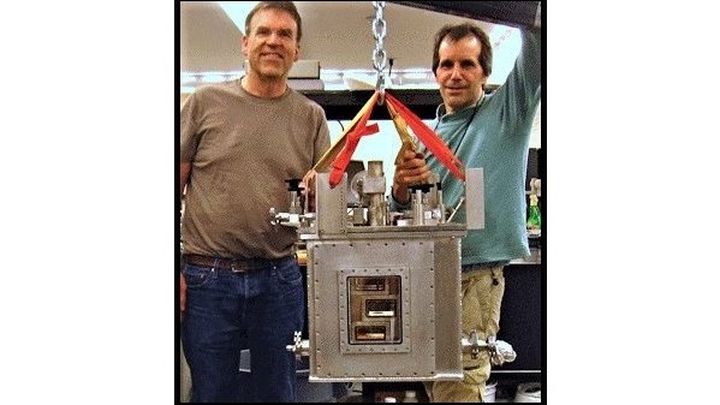
Publish new knowledge about snow crystals
Donation protected

Snow crystals* continue to surprise scientists.
We seek $3600 to cover the journal charges for publishing our research paper on snow-crystal formation. The work involved discovering a new aspect of snow-crystal growth that, it seems, nobody had really paid any attention to, a type of "sideways" growth. Our paper on these results received good peer reviews (see below) in a highly regarded scientific journal (Atmospheric Chemistry and Physics) and thus is expected to appear in this open source journal. The research was funded by the US National Science Foundation and the educational non-profit Laucks Foundation, but the grants ran out before our final write up.
Note two things here: 1) All scientific journals have page charges like this one, and 2) Getting a Ph.D. and faculty appointment is most definitely not a ticket to wealth in the pure sciences. We do this research because we love making discoveries and spreading the knowledge.
We are two retired, former professors of atmospheric science. Our degrees are in physics and mathematics, and we have decades of experience studying ice crystal growth. Our research here reports on newly discovered aspects of snow-crystal growth and should help cloud physicists and atmospheric scientists better understand ice development in clouds. The image below shows us in the lab: Brian Swanson at the left, peering into the apparatus, Jon Nelson at right, examining data.

Before explaining what we did and what our peers thought, here is a little background on snow:

In our research, we discovered unique features in laboratory-grown ice crystals such as the following hexagonal crystal.

Do you see anything unusual in this crystal?
We did. Several things, such as the 12 air pockets in the corners (dark spots). Based on our interpretation of this and numerous other crystals, we proposed two ways that crystal surfaces can grow "sideways" or laterally. That is, crystal-growth modeling should include "lateral facet" growth, not just the standard "normal facet" growth. We point out three types of lateral facet growth, and show how two of them can be absolutely crucial. Stated briefly, the crystal researcher should think laterally, not just normally. We use the theory to explain features in common snow crystals such as those below

and other, less well-known (yet important) ice-crystal types. The expert reviewers had high regards for the work, leading to it being accepted for publication at the journal. A few quotes:

We gave a seminar recently at the University of Washington about this work, which led to some interesting discussions. It was nice to see interest in the growth forms of snow. Here is a recording of the talk (39 minutes):
We are very grateful for your help in our efforts to contribute scientific knowledge to present and future generations, and in return, will gladly mail you signed copies of the published paper. (You just need to give us a mailing address.) Also, as the journal is open source, anyone with an internet connection can obtain, for free, a pdf copy of the paper.
A hearty thank you from both of us.
A short video about our work with this paper is below.
More information and pictures of snow and ice are at on my (JN) blog:
http://www.storyofsnow.com/blog1.php
* With the exception of the trigonals (which appear in the paper), the snow crystals in the top image are from the famous Magono-Lee collection, a copy of which was given to me (JN) by Art Rangno.
 Co-organizers (2)
Co-organizers (2)
Jon Nelson
Organizer
Redmond, WA
Brian Swanson
Co-organizer